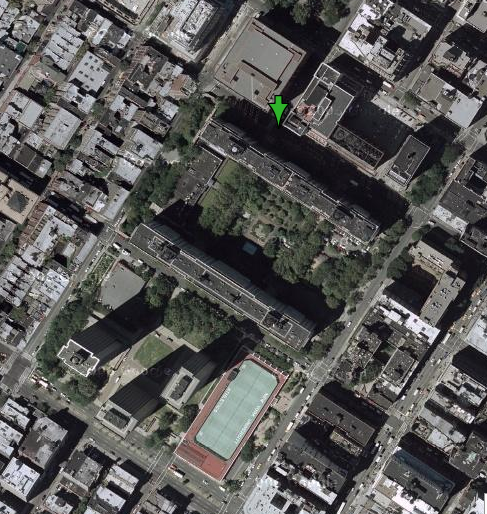Robert Moses: Scoundrel or Seraph?

Robert Moses is one of the most vilified people in the history of New York. To this day he is cursed for having installed the Cross-Bronx Expressway
that leads away from the George Washington Bridge and tore up
neighbourhoods across the Bronx. He’s also blamed for displacing
thousands in slum clearances and trying to turn numerous landmarks into
freeways.
However, a series of recent exhibits (Robert Moses and the Modern City at the Museum of the City of New York and Slum Clearance and the Superblock Solution at the Wallach Art Gallery) revisit his history and show that his story is more complex that first imagined.
For
instance, New York was suffering under the automobile: the grid system
could not handle the traffic of the 1940’s and the opening of the
George Washington Bridge meant that an unmanageable amount of traffic
was deposited on the north end of Manhattan daily.
New
York had no option but to build more roads, but Moses makes an easy
target as he so whole-heartedly embraced the car. He went so far
as to try and build a bridge from Battery Park to Brooklyn (ultimately
denied by Roosevelt in 1944/45 as a threat to national security-if it
had been blown up it would have sealed in the naval base in New York
harbour) and he tried to build an expressway through Washington Square
(but to be fair, it was used by cars back then-it wasn’t the pedestrian
oasis it is today).
Here’s
a shot of the original model of his Cross-Manhattan Expressway (it
would have connected East Side to West; thank god it was never
built). That’s 12 lanes of traffic that would have ripped across
31st street (an early model had it going through the Empire State
Building):

Moses also embraced slum clearance. In 1949, the U.S. government passed the Slum Clearance Act,
which gave generous subsidies for the ill-defined notion of destroying
slums. New York’s middle class was in the midst of a flight to
the suburbs and so Robert Moses took up slum clearance as his cause celebre
to reinvigorate the city. He replaced neighbourhoods with
superblocks that typically either accelerated the decay of a region (by
turning it into a ghetto) or simply displaced the problem (almost any
privately sponsored slum clearance ended up becoming luxury housing;
almost no prior residents ended up in the new apartments). To
this day, the city (particularly the East Side) is dotted with drab
high density apartment buildings built between 1945-65.
Similarly,
there was no compensation for commercial enterprises displaced by slum
clearance. Most of the light manufacturing companies displaced
either folded or moved to the suburbs, further accelerating Manhattan’s
decline as a manufacturing center.
In the end, Jane Jacobs published The Death and Life of Great American Cities
in 1961 and Moses’ slum clearance ground to a halt. It was
replaced with the Jacobsian notion of focusing on many small scale
neighbourhood-centric improvements rather than City Council-driven
change.
However,
there were several benefits to Robert Moses’ large scale clearance
programs. He used clearance to build many of the institutions
that would be responsible for the city’s renaissance, including The Lincoln Centre, the United Nations (he secured them in New York vs. Philadelpia or San Francisco) and the Coliseum convention center.
He
also used slum clearance to build up New York’s university’s-and no one
disputes the importance of strong universities in building successful
cities. For instance, NYU was based partially in the Bronx until
he used slum clearance to consolidate their operations at Washington
Park (and build the odd-looking Washington Square Village/Silver
Towers):

Also, Moses increased the city’s parkland from 14,000 to 34,673 acres and constructed 660 new playgrounds.
All in all, a complicated 34 year (1934-68) legacy...
Thursday, April 5, 2007